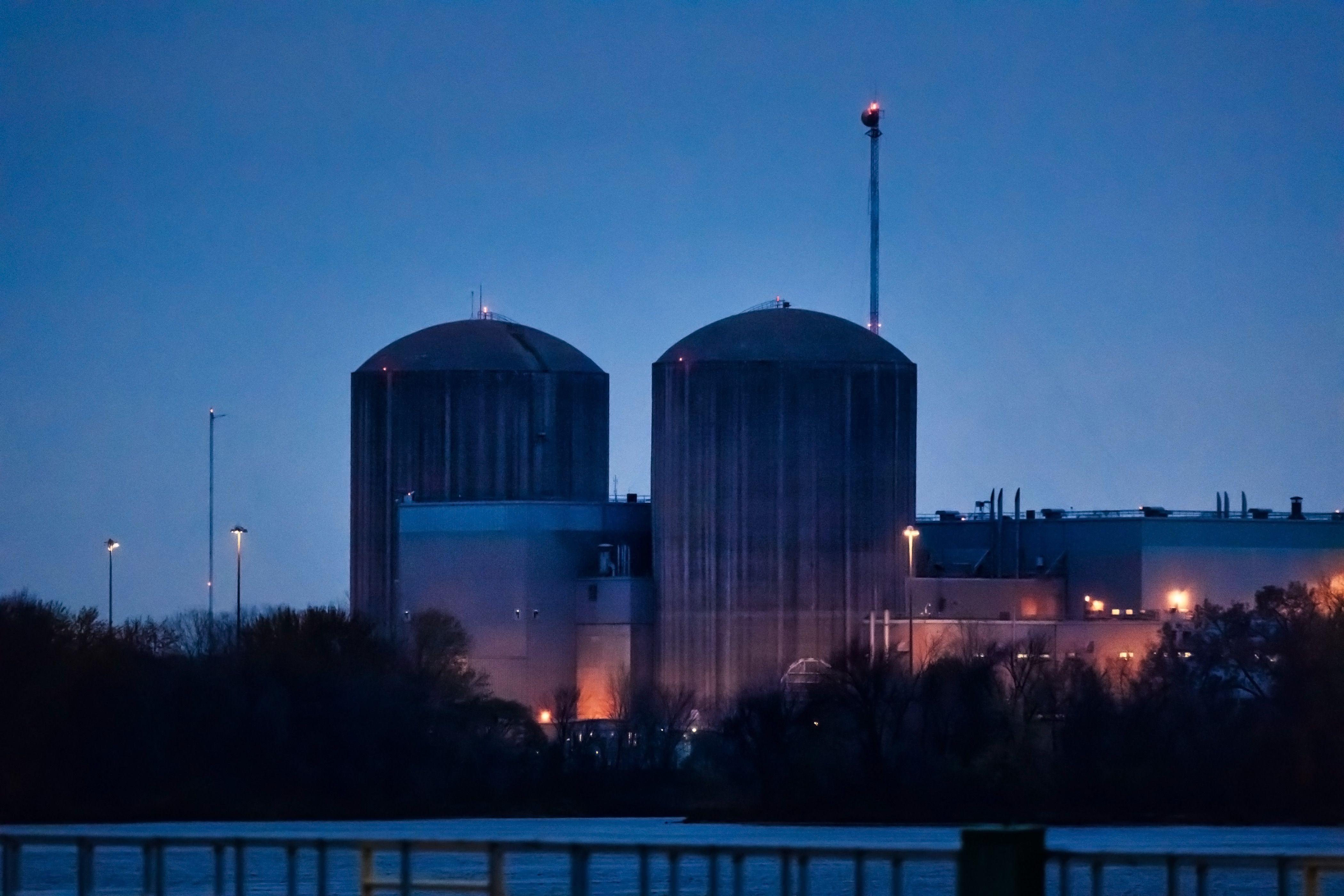U.S. Nuclear Industry: Domestic and International Challenges

Domestic Challenges
Nuclear power plants in the U.S. produce 19% of its electricity. Although the U.S. is a pioneer of the nuclear industry, the average age of its reactors is around 40 years. New investments are time-consuming and money-intensive; for instance, the construction of the first nuclear power plant in about 30 years, in Vogtle, Georgia, started in 2013 and should be finished in 2021-22. In some cases, protests against the use of nuclear energy restrict its use. In recent years, nuclear energy has also faced stiff competition from other energy sources, such as the rapid increase in gas production as part of the U.S. shale revolution and subsequent lower prices. Renewable energy sources have also started to play a more prominent role in the mix. As a result, more power is generated from natural gas and renewables, which undermines the profitability of new nuclear investments.
The circumstances have impacted the whole supply chain for the U.S. nuclear industry. Between 2010 and 2018, uranium production decreased from 1,900 to 300 tonnes. In 2018, 90% of uranium came from imports (13% from Russia). Imports of cheaper uranium is supported by domestic nuclear power plant operators to decrease costs, which in turn undermines domestic production. U.S. facilities that produce nuclear fuel face other troubles, some the result of the lower demand in Japan after the Fukushima disaster and in Germany after its decision to close nuclear power plants. As a result, the only domestic facilities for uranium conversion (a stage in producing nuclear fuel) halted operations in 2018. Moreover, in the U.S. there is only one operational enrichment facility (the next stage of fuel production) and it covers only around 30% of demand.
Competition from Russia and China
The leaders of these two countries have been supporting their nuclear industries for years, and thanks to these investments, their reactor fleet is more modern than the U.S. (see: Table 1) and they are working on new technology (e.g., generation-IV reactors, which will allow them to “close” the nuclear fuel cycle— nuclear waste can be used to run the reactor). What is more, Russia has a strong position on the international market and China is planning foreign expansion as well; why the U.S. is concerned about this is that this cooperation with other states is often only part of Russia’s and China’s aim of wider economic and political influence by binding the client and supplier for years through, for example, package deals, multi-year loans, and gaining access to critical infrastructure.
Russia has many years and comprehensive experience in the nuclear industry. The state-owned Rosatom and its subsidiaries are responsible for the whole supply chain of the Russian nuclear sector and because of that it can offer its clients comprehensive deals. For instance, in its Akkuyu investment in Turkey, Rosatom will construct the nuclear power plant, own it, and be the operator. The foreign investments by the corporation are supported by the government with, for example, loans that might be attractive to countries with low creditworthiness. All these advantages make Rosatom a prime partner for countries like Belarus, Bangladesh, as well as some NATO and EU members (e.g., Hungary). The corporation is involved in various projects in more than 50 countries in total.
The Chinese nuclear industry is dominated by three stateowned entities—CNNC, CGN, and SNPTC. The Chinese have gained experience thanks to massive domestic investments. Cooperation with foreign partners is also crucial. In the Vogtle project, a Westinghouse AP1000 reactor will be used for the first time in the U.S., however, in China, there are already four of these reactors and the SNPTC is developing its own design based on it, the CAP1400. However, China has not much experience on foreign markets: its nuclear industry has yet to become an element of foreign economic expansion and the designated “export reactor” will be Hualong-1. This year, the first foreign nuclear power plant using it will be completed (in Karachi, Pakistan). China is also eager to enter the United Kingdom market: currently, the Hualong-1 design is undergoing certification by the UK regulator. A positive decision means the design meets all security criteria and can be used in the UK (however, it does not also grant a permit for any specific nuclear power plant investment). Successful certification in one of the countries that pioneered nuclear technology will boost China’s prestige in this area; apart from that, China also tries to cooperate on foreign projects as an investor (e.g., in Bulgaria). However, the controversies surrounding Chinese involvement in 5G and the accusations it initially hid the scope of the COVID-19 pandemic might have harmed its credibility in the nuclear industry as well.
The New U.S. Strategy
The document “Restoring America’s Competitive Nuclear Energy Advantage” aims to help the U.S. nuclear industry regain competitiveness so it can rival with Russia and China abroad. Per the strategy, three main initiatives to achieve this are to revive the domestic uranium mining industry, increase technological innovation, and move into markets dominated by Russia and China.
Domestic uranium mining would be supported by, for example, limiting imports. The U.S. regulator would have the right to deny imports of nuclear fuel fabricated in Russia and China on national security grounds. Domestic production is also to be supported by establishing a federal uranium reserve.
The strategy also focuses on new technology, such as small modular reactors (SMR), which will enable the construction of smaller nuclear facilities, both reducing costs and time of investments. The U.S. nuclear industry is mainly composed of various private entities, so the American administration cannot directly manage it the way China does. However, under the strategy, SMR could be used on, for example, military bases to create demand for the new technology and promote it. The strategy also proposes wider international cooperation with regulators in the certification of new technologies, including SMR. It might mean the U.S. will both promote SMR and push for adjusting regulations on this technology.
The U.S. aims to enter markets dominated by Russia and China, although competition with Russia in nuclear power plant construction might be particularly difficult. The strategy also aims to diversify the supplies of nuclear fuel for foreign markets and financing work on a nuclear fuel that could be an alternative to the Russian one. Since the strategy openly signals the administration’s concerns over Russian and Chinese influence, it implies that the pressure on U.S. allies to not cooperate with these countries in nuclear investments will be stronger.
The U.S. offers government support, for example, for research on new nuclear technologies, but the administration has very limited options to financially support foreign investments. This is an important issue since the companies from Russia and China enjoy such state support. The strategy emphasizes that there is a need for support from the Export-Import Bank of the U.S. The strategy also suggests that nuclear investments could be supported by the U.S. International Development Finance Corporation, which offers development aid. However, that would require legislative changes, and using development aid to counter the influence of Russia and China might be controversial. It remains an open question to what extent investors—who broadly support renewables—will be eager to finance U.S. nuclear investments (e.g., SMR), seeing now that such projects have political support.
Outlook
There is growing concern in the U.S. about the domestic nuclear industry, as well as the international influence of Russia and China in such a critical global sector. Some of the elements of the new strategy must be refined, however, it signals U.S. determination to counter Russian and Chinese influence in NATO and EU countries. To some extent, it might be convergent with Poland and EU support for diversifying nuclear fuel supplies to Russian reactors in the Union.
Poland and the U.S. signed in 2019 a memorandum on civil nuclear energy. Construction of a nuclear power plant in Poland, like the projects in the U.S., face serious challenges. If the U.S. becomes involved in this project, it is in Poland’s interest to seek advantageous financing and the best technology available. It might be important to cooperate in the less obvious but important areas like research institutions or nuclear medicine: Poland is an important world exporter (including to the U.S.) of medical isotopes, produced in Poland’s research reactor.
Table 1. Nuclear Energy in U.S., Russia, China
|
Country |
Reactor count |
Capacity (GW) |
Power generation (TWh) |
Average age of the reactors (% of capacity, 2019) |
|||||
|
|
2010 |
2018 |
2010 |
2018 |
2010 |
2018 |
<10 |
10-30 |
>30 |
|
U.S. |
104 |
98 |
101 |
99,8 |
807 |
808 |
1% |
8% |
90% |
|
Russia |
32 |
36 |
22.7 |
28 |
159,4 |
191,3 |
25% |
14% |
61% |
|
China |
13 |
46 |
10 |
42,8 |
71 |
277 |
80% |
20% |
- |
Sources: “Nuclear Power Reactors in the World,” International Atomic Energy Agency 2011, 2019; “Nuclear Power in a Clean Energy System,” International Energy Agency.


